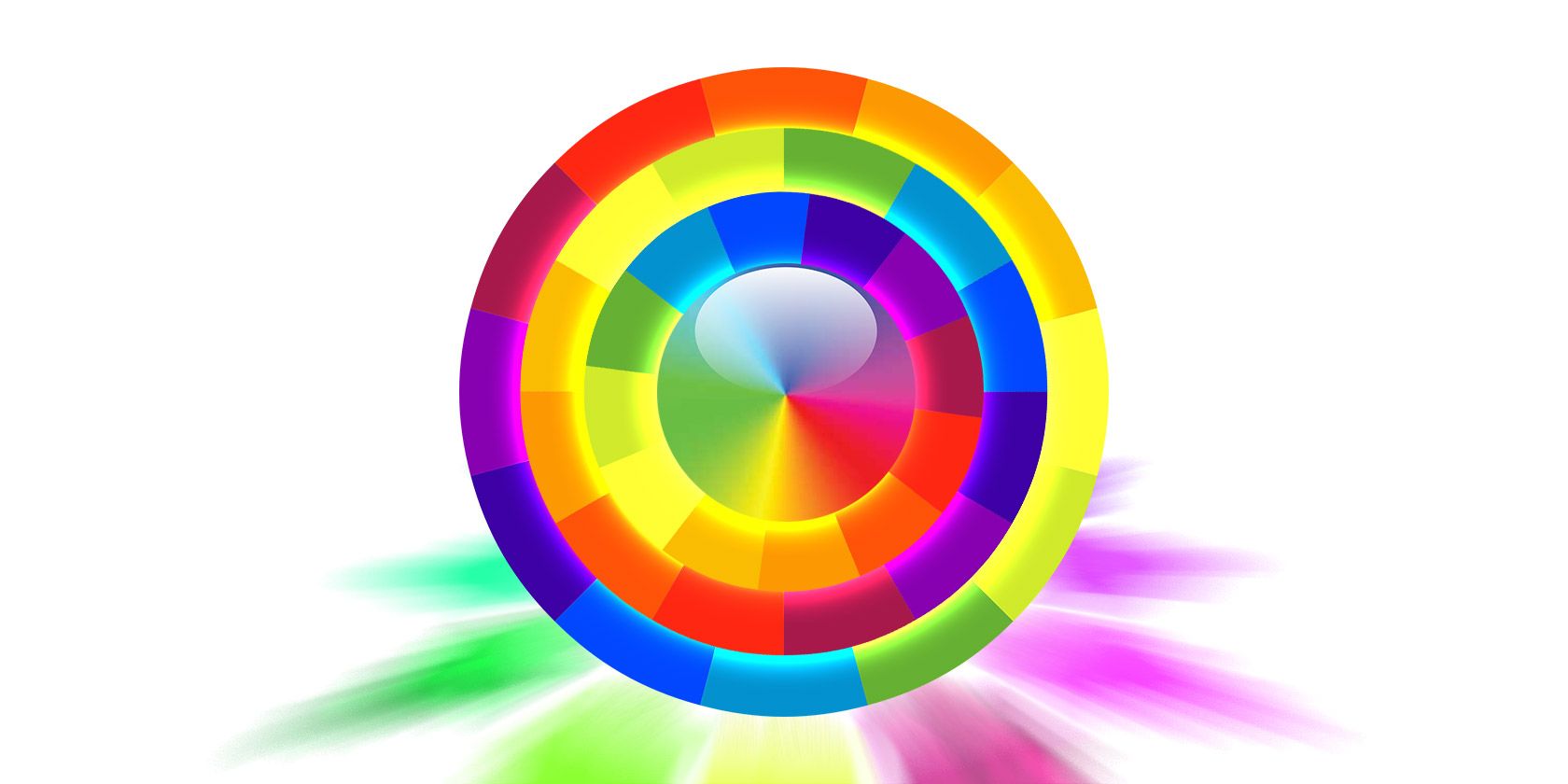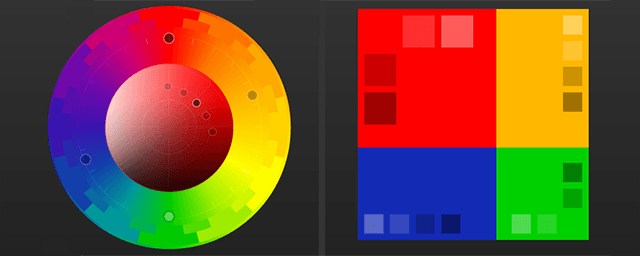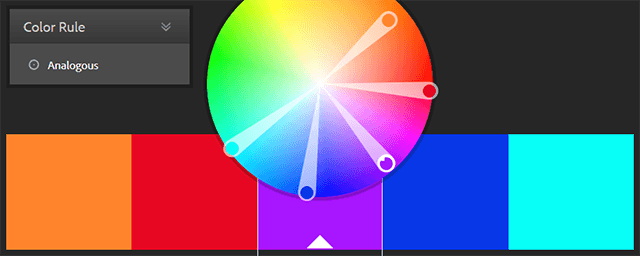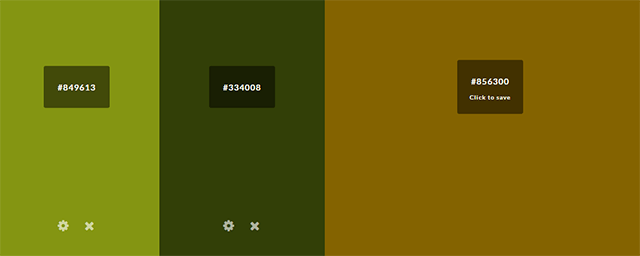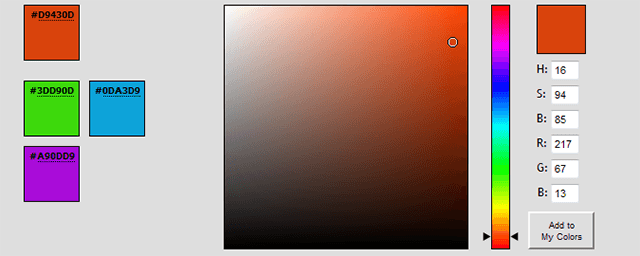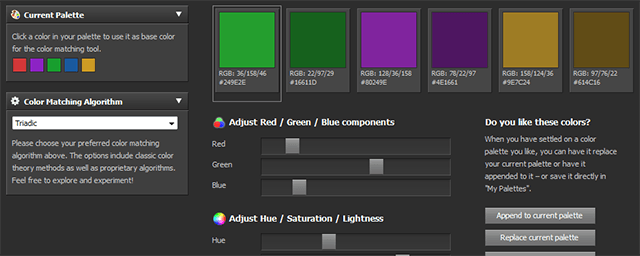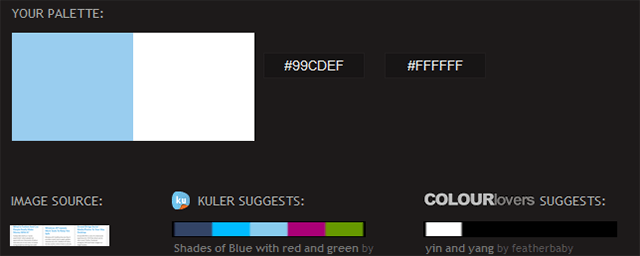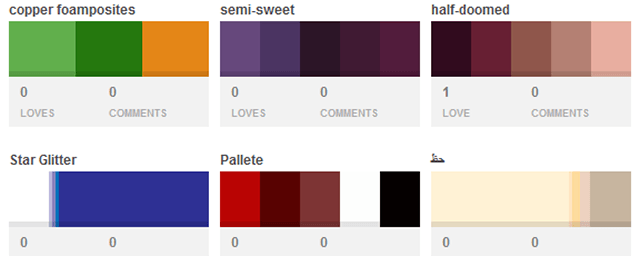Colors are tricky. It might seem easy enough to pick a handful of colors that look good together, but as any designer who has spent hours tweaking shade after shade to no satisfaction can tell you: it's tricky.
Thankfully, tools exist to simplify the process. In most cases, you won't even need to know the basics of color theory. A few minutes of experimentation can result in some top-notch color sets that will impress even the most knowledgeable of skeptics.
Note: Before playing with colors, make sure you calibrate your monitor or else the colors won't be properly represented on your screen.
Paletton
Formerly known as The Color Scheme Designer, Paletton is one of the most popular tools for picking a color palette that just works without much effort. As you'll soon see, this popularity is well-earned.
Start by selected a color scheme type: Monochromatic, Adjacent (or Analogous), Triad, Tetrad, or Free Style. If you have no idea what any of those mean, you may want to brush up on basic color theory first. Then, on the color graph, you can drag your selections around to explore new palettes and be confident that these palettes will never look bad.
With this system, it may be tough to pick palettes that don't conform to traditionalist ideas of color theory, but if you don't care for the additional level of experimentation, Paletton is perfect.
Adobe Kuler
Kuler has been around for a long while and has earned a reputation as a reliable color palette tool over that time. With a few mouse clicks, you'll have several new color schemes at your fingertips.
Like Paletton, first select a color rule: Monochromatic, Analogous, Triad, Complementary, Compounds, or Shades. Then, as you drag around the color selections, the other colors automatically adjust to fit within the chosen color rule.
To disable the color rule restrictions and change one color at a time, you can switch over to the Custom rule whenever you wish. You can also save these colour schemes, and browse others created by the community.
Color by HailPixel
This is the simplest tool that you're going to find on this list, but don't let that fool you: it's extremely useful. Color chooses colors by using an experimental algorithm that maps the Hue, Saturation, and Lightness values to the X-Axis, Y-Axis, and Scroll-Level of the cursor on the page.
Once you've found a color that you like, you just click - the color gets set to the side and you can continue picking more colors. It sounds more complicated than it is, and it's definitely worth a try. You'll be shocked at how easy it is to use.
Color Picker
Color Picker is a minimalist tool that feels a lot like a primitive version of Color by Hailpixel. It allows you to pick single colors at a time using a traditional color picker interface and save them to a palette.
With a color selected, you can also click on one of the "Generate Color Scheme" buttons to generate a color scheme based on your currently selected color. Color scheme types include Complementary, Triad, Tetrad, and Analogous.
Most will probably prefer Color by Hailpixel (above) over Color Picker, but for those who think the former is too minimalist, the latter is always available.
Color Explorer
Feature-wise, Color Explorer doesn't offer anything special on top of the tools covered up to this point. However, in terms of interface and organization, it works a little differently. There are distinct "steps" that you go through to build your color schemes.
First use the Color Picker to build a palette of colors. Alternatively, you could use the Color Library to browse different sets of colors to pick the ones that look best. Once you have your palette built, use the Color Matching tool to generate full color schemes based on your palette.
Color scheme algorithms include Monochromatic, Analogous, Complementary, Split-Complementary, Triad, and Tetrad (or Square). In addition, there are two algorithms that are unique to this website: ColorMatch 5k Classic and Color Explorer's Sweet Spot Offset.
Pictaculous
Let's say you don't want to pick your own colors. Instead, let's say you've found some great photos or images that contain your desired color scheme. Or, let's say you have an image and you want ideas for a color scheme that complement the colors of that image. What can you do?
That's where Pictaculous comes in. Upload any image and Pictaculous will analyze and generate a palette of colors based on that image. Furthermore, it will offer alternative color scheme suggestions that come from Kuler (mentioned above) and Colour Lovers (mentioned below).
Colour Lovers
It's more than a tool; it's a community. Colour Lovers is the place to go when you're interested in color schemes from a social perspective. It's less focused on generating one-off schemes and more focused on looking at color trends.
Browse by category (for example Wedding, Fashion, Web, Business) to find some great palettes that fit those specific contexts. You can also visit the Trends page to see some popular color sets, though it seems that it hasn't been updated since mid-2012. Despite that, it's still a great resource for inspiration.
These tools can come in handy for a number of uses, especially when it comes to digital art or digital photography, but also for decorated events like weddings.
Where do you go when you need to devise new color schemes?

